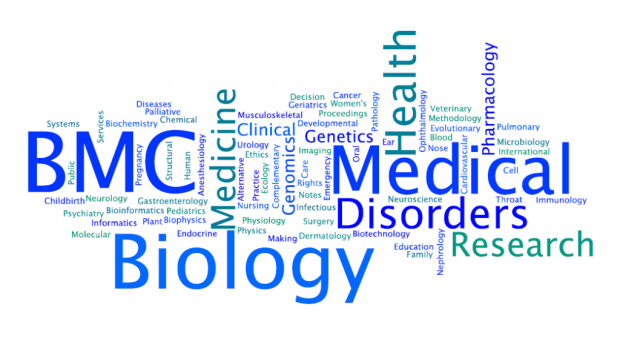
Psychiatry: The patient’s preference in psychological treatment
Providing patients with a choice regarding the health care they receive is something that has been actively encouraged in a number of healthcare systems worldwide. But does a patient’s preference for how their treatment is delivered, and whether these preferences are met, affect the outcome of the treatment? New research published in BMC Psychiatry suggests that routinely assessing and meeting patient preferences may improve the outcomes of psychological treatment. For more information make sure to read the blog post written by Executive Editor Anna Clarke.
Evolutionary Biology: When the wolf became a dog
Dogs were the first animal species to be domesticated and continue to occupy an important place in human society. Alex Cagan and Torsten Blass analyzed polymorphism data of dogs and wolves to identify regions of the genome that are highly differentiated. The researchers conclude in their paper in BMC Evolutionary Biology that strong selection in the initial stages of dog domestication appears to have occurred on multiple genes involved in the fight-or-flight response. Some of these genes have been associated with behavioral differences in modern dog breeds, suggesting their importance at multiple stages of the domestication process.
Emergency Medicine: Gender differences in care of trauma patients
Efficient pre-hospital care can lower trauma-related death. This month, research published in BMC Emergency Medicine showed that prioritization of pre-hospital care for severely injured late adolescent and adult trauma patients differs in Sweden between the genders. Men were more likely to receive the highest pre-hospital priority than women, controlling for injury mechanism and vital signs on scene. The study explores how sex differences in presentation of symptoms, and existing triage protocols might lead to this difference.
Image of the month:

Madagascan orchids (members of the Bulbophyllum clade C) in their different forest habitats. Photos by G. A. Fischer, BMC Evolutionary Biology 2016, 16:14.
Geriatrics: Association between eating alone and depression
Depression is one of the main health concerns in elders and can also lead to other conditions. In a new cross-sectional study published in BMC Geriatrics, the relationship between eating alone and depressive symptoms in more than 9,000 participants in China above the age of 60 was investigated. The researchers found that the lack of companionship at mealtime due to the fast pace of industrialization and urbanization might be independently associated with depressive symptoms for women and those between 60-74 years of age. They further conclude that eating alone might be a stronger factor in developing depressive symptoms than living alone.
Cell Biology: Cell recovery from acute cold shock
Animals are exposed to a wide range of environmental stresses that can cause potentially fatal cellular damage. The ability to survive the period of stress and repair damage incurred is essential. In a recent study published in BMC Cell Biology, researchers investigated phases of death associated with cold shock in worms (Caenorhabditis elegans). Cold shock of less than 12 hours does not initially kill the worms but starts a progression of phenotypes over a 96 h time window after which the worms either successfully recover and survive, or fail to do so and die. Worms lacking the G-protein coupled receptor FSHR-1 are resistant to acute death from longer cold shocks and are more successful in their recovery from shorter sub-lethal cold shocks.
Medical Genomics: Genomic information for clinical decision-making
Stakeholders are seeking to understand the value of using genomic information to inform clinical decision-making. The IGNITE (Implementing GeNomics In pracTicE) Network which is an innovative series of projects and pilot demonstrations has been described in BMC Medical Genomics. IGNITE aims to enhance translation of validated actionable genomic information into clinical settings and develop measures of outcome in response to genome-based clinical interventions.
Public Health: Self-perception of weight affects food choice
Obesity is a great public health concern in many developed countries. However, mechanisms that can help prevent obesity, such as self-perception of weight and calorie postings at point-of-purchase in restaurants are still not well-characterized. In a recent paper published in BMC Public Health, Nianago and colleagues examined the association of self-perception of weight with food choice intentions and consumer response to calorie information among low-income adults residing in Los Angeles County. The researchers found that self-perception of weight was linked with the intention to select lower-calorie foods if calorie information was available at the point-of-purchase.
Bioinformatics: Annotation software for mRNA assemblies
Martin Bens and colleagues have addressed the complexity problems of RNA-seq assembly via the creation of an annotation tool (FRAMA). This genome-independent software published in BMC Genomics is able to aid eukaryotic post-transcript de-novo assembly tasks. In the presented study the researchers used FRAMA on the transcriptome of the naked mole rat.
Neuroscience: Know more about periventricular leukomalacia
Periventricular leukomalacia (PVL) is the predominant brain pathology in premature infants and is characterized by damage to the white matter in the immature brain resulting in widespread deficits of cognitive and motor function. However, the underlying mechanisms by which damage to immature white matter occurs are still unclear. This month, research published in BMC Neuroscience shows that PVL-like injury affects the different components of the thalamocortical circuitry that can be defined by vesicular glutamate transporters 1 and 2. Both transporters are required for glutamatergic synaptic transmission in the central nervous system and provide a mechanistic insight into this area.
Comments